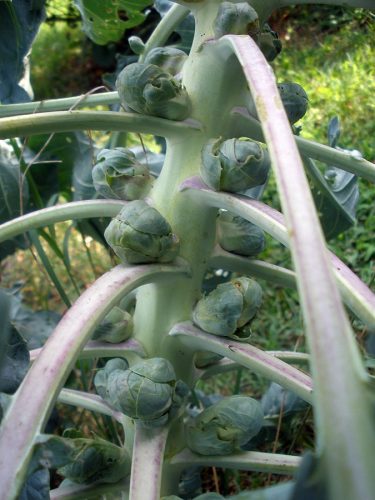Brussels sprouts is a true winter vegetable. Brussel sprouts grow in the leaf axils.
Also known as:
Sprouts
You are viewing the mobile-adapted version of the page.
The one for tablets, laptop and desktop also provides general information, such as origin and cultivation.
Brussels sprouts – (Brassica oleracea) belongs to the crucifers (Brassicaceae). Sow in February under glass, mid-April to late June in open ground in final location. Harvest fall and winter. Brussels sprouts are hardy and become less bitter after frost. You can top Brussels for a slightly earlier harvest. Growing Brussels under insect netting keeps many pests away.
Keep Brussels sprouts weed-free. It is not necessary to remove the leaves from the plant; it does not increase yield. After harvest, the stumps can be thrown away (organic waste container); they are so hard that they are difficult to digest. This makes them unsuitable for the compost heap.
Bugs
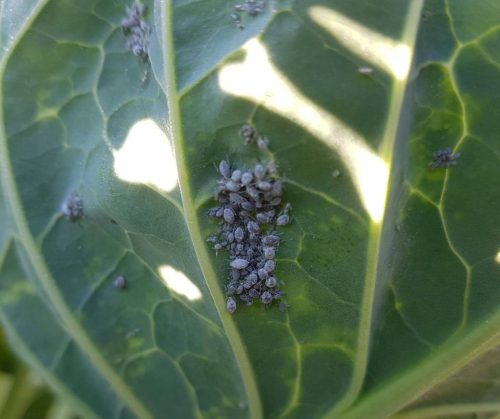
Leaves with black ap
Poor growth, maggots in the root, brown tunnels in the sprouts: maggots of the cabbage root fly (Delia radicum).
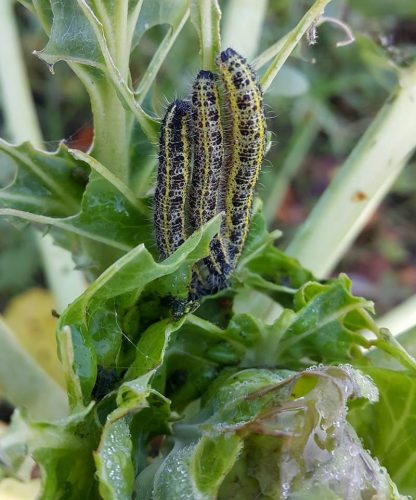
Damaged and eaten leaves: larvae (caterpillars) of the large white (Pieris brassicae), or of the cabbage moth (Mamestra brassicae).
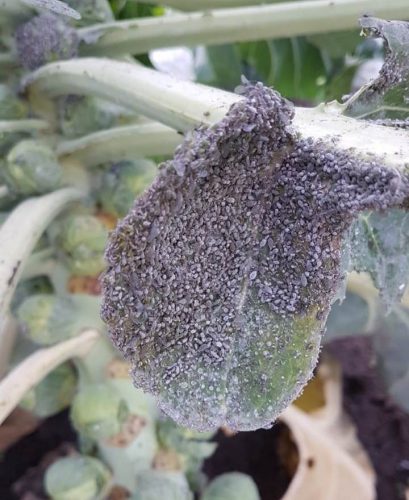
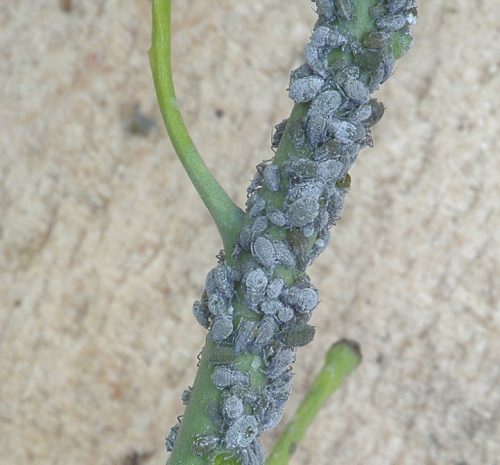
Initially white or purple spots on malformed leaves (curled, bumpy), then the plants are colonized by ap

White flies colonize the underside of the leaf. They feed on leaf sap (mesophyll) and secrete honeydew: Cabbage whitefly (Aleyrodes proletella). Sooty mold then forms on the honeydew.
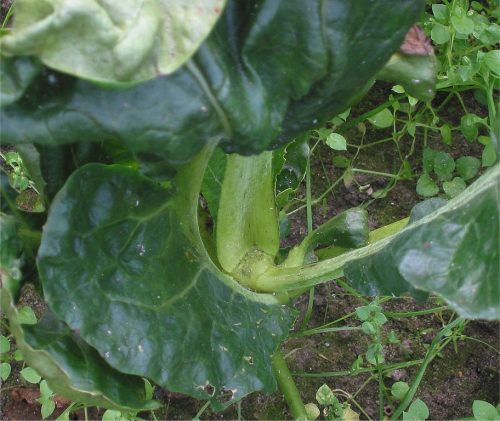
Leaf stems and leaves deform and twist; often the growing point of seedlings and developing flower heads are also affected: swede midge (Contarinia nasturtii).
Fungi & diseases
Yellow fungus on Brussels sprouts: white rust (Albugo candida).
Poor growth, plant wilting, swollen roots rotting away: Clubroot (Plasmodiophora brassicae). Brussels sprouts are less susceptible, but can sustain the fungus.
Other
Leaf edges turn brown: calcium deficiency.

